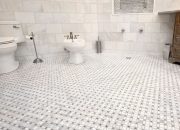Pricing and Installation
Flooring decor near me – Choosing new flooring involves careful consideration of both material costs and installation expenses. Understanding the price range for different materials and the potential hidden costs will help you budget effectively for your project. This section will Artikel typical costs in our local area and discuss installation methods to give you a clearer picture of the overall investment.
Pricing for flooring materials varies significantly depending on the type of flooring, quality, and brand. For example, hardwood flooring typically ranges from $3 to $15 per square foot, with engineered hardwood falling within a similar range. Laminate flooring offers a more budget-friendly option, usually costing between $1 and $5 per square foot. Luxury vinyl plank (LVP) and luxury vinyl tile (LVT) are popular choices, generally priced between $2 and $8 per square foot.
Ceramic and porcelain tile prices vary considerably, from $2 to $15+ per square foot depending on the style, size, and quality. Carpet costs are typically quoted per square yard, ranging from $2 to $10 or more per square yard, with significant variations based on fiber type (nylon, polyester, wool) and density.
Installation Methods
The installation method for each flooring type differs significantly, impacting both cost and time. Hardwood flooring often requires nailing or stapling to a subfloor, sometimes with the addition of a moisture barrier. Engineered hardwood can be installed using a click-lock system, simplifying the process. Laminate flooring, similar to engineered hardwood, typically utilizes a click-lock system for easy installation. Luxury vinyl plank and tile can be installed using a click-lock system, glue-down method, or even floating installation.
Ceramic and porcelain tiles require professional installation, involving precise cutting, setting with mortar, and grouting. Carpet installation involves stretching and securing the carpet to the subfloor, often using tack strips around the perimeter.
Hidden Costs of Installation
Beyond the cost of materials, several hidden costs can significantly increase the overall project expense. Subfloor preparation is often necessary, particularly with older homes or uneven surfaces. This might involve leveling the subfloor, repairing damaged areas, or adding underlayment for added comfort and insulation. Removing existing flooring can also be time-consuming and expensive, especially if the old flooring is difficult to remove or requires special handling (e.g., asbestos removal).
Other hidden costs can include permits, waste disposal fees, and potential unexpected repairs discovered during the installation process. For example, a seemingly minor subfloor issue could lead to extensive repairs, unexpectedly increasing the overall cost.
Questions to Ask a Flooring Installer, Flooring decor near me
Before committing to a flooring installation project, it’s crucial to ask the installer specific questions to ensure clarity and avoid misunderstandings. This will protect your investment and ensure a smooth installation process.
- What is the total estimated cost, including materials, labor, and any potential hidden costs?
- What is your experience with installing the chosen flooring type?
- What is your warranty policy and what does it cover?
- What is your timeline for completing the project?
- Do you have references from previous clients I can contact?
- What is your process for handling unexpected issues or repairs during installation?
- What type of subfloor preparation is needed, and what is the cost associated with it?
- What is your waste disposal process and associated costs?
Styles and Trends

Choosing the right flooring can dramatically impact the overall aesthetic and feel of your home. Current flooring trends reflect a desire for both practicality and style, incorporating a range of materials and designs to suit diverse tastes and lifestyles. Understanding these trends can help you make informed decisions when selecting flooring for your space.
Current Flooring Design Trends
The local market currently showcases three prominent flooring design trends: the enduring appeal of natural materials, the sleek sophistication of modern minimalism, and the cozy warmth of rustic farmhouse styles. These trends offer diverse options to match any home’s character and personal preference.
- Natural Material Focus: This trend emphasizes the beauty of natural materials like hardwood, stone, and bamboo. Color palettes often feature warm earth tones such as browns, beiges, and creams, complemented by subtle variations in grain and texture. Popular patterns include wide plank hardwood floors in a natural finish, or large-format stone tiles with a honed or matte finish. This style works well in both traditional and contemporary settings, providing a sense of timeless elegance.
For example, a living room might feature wide-plank oak flooring in a light honey tone, while a bathroom could use large, beige limestone tiles.
- Modern Minimalism: This trend prioritizes clean lines, neutral colors, and a sense of spaciousness. Color palettes are typically monochromatic, using shades of gray, white, or beige. Patterns are often simple and geometric, such as large-format porcelain tiles in a solid color or engineered hardwood planks in a subtle linear grain. This style creates a sophisticated and uncluttered atmosphere. For instance, a kitchen might incorporate large, off-white porcelain tiles, while a bedroom could use light gray engineered wood planks with a brushed finish.
- Rustic Farmhouse Charm: This trend embraces a more casual and comfortable aesthetic, inspired by rural settings. Color palettes often feature warm, earthy tones with hints of gray or blue. Patterns may include reclaimed wood with visible knots and imperfections, or patterned ceramic tiles with a distressed finish. This style evokes a feeling of cozy warmth and character. A dining room, for example, might utilize reclaimed wood flooring with a rustic finish, while a bathroom could feature patterned ceramic tiles with a vintage look.
Material Selection and Design Style
Different flooring materials lend themselves naturally to different design styles. For example, wide-plank hardwood flooring is frequently used in traditional and rustic settings to create a warm and inviting atmosphere. In contrast, large-format porcelain tiles are often favored in modern minimalist designs for their clean lines and easy maintenance. Natural stone, such as slate or travertine, can be incorporated into both traditional and rustic designs, adding a touch of elegance or a sense of rugged texture, respectively.
The strategic use of material contributes significantly to achieving the desired aesthetic.
Finding Local Retailers: Flooring Decor Near Me

Locating the perfect flooring for your home often begins with finding a reputable retailer in your area. This involves more than just a quick online search; it’s about understanding the different options available and choosing the retailer that best suits your needs and preferences. This section will guide you through the process of finding local flooring retailers and comparing their services.Finding local flooring retailers is simplified through the use of online search engines and retailer directories.
Using your specific address as a search term combined with “flooring stores near me,” “flooring retailers,” or “carpet stores near me” will generate a list of local businesses. Many online directories also allow you to filter results by type of flooring (e.g., hardwood, tile, carpet), services offered (e.g., installation, financing), and customer ratings. Refining your search based on specific needs, such as eco-friendly options or a particular flooring style, will further streamline the process.
Showroom Visits versus Online Ordering
Visiting a showroom offers tangible benefits compared to solely relying on online ordering. Showrooms allow you to see and feel the flooring samples firsthand, assessing the texture, color, and overall quality in person. This hands-on experience is crucial in making informed decisions, particularly regarding color matching with existing décor and assessing the durability of different materials under varying lighting conditions.
Furthermore, showroom visits allow for direct interaction with flooring specialists who can provide expert advice, answer questions, and offer personalized recommendations based on your specific needs and budget. Online ordering, while convenient, lacks this personalized touch and the ability to physically examine the product before purchase.
Comparing Retailer Services
Different types of flooring retailers offer varying levels of service and expertise. Big-box stores often provide a wide selection of flooring options at competitive prices, but their service might be less personalized, and installation services may be outsourced. In contrast, specialty flooring shops usually offer a more curated selection with a focus on quality and customer service. They often employ experienced flooring specialists who can provide in-depth advice on product selection, installation, and maintenance.
Independent retailers may also offer more personalized design consultations and custom installation services. Finally, online retailers provide convenience but lack the personalized service and the ability to physically inspect the product.
Local Flooring Retailers
The following table lists three hypothetical local flooring retailers, their contact information, and a brief description of their services. Remember to conduct your own research to find retailers in your specific area.
| Retailer Name | Contact Information | Services Offered |
|---|---|---|
| Flooring Emporium | (555) 123-4567, [email protected], 123 Main Street | Wide selection of hardwood, tile, and carpet; professional installation; financing options available. |
| Tile & Stone Gallery | (555) 987-6543, [email protected], 456 Oak Avenue | Specializes in tile and stone flooring; design consultations; custom installation; high-end materials. |
| Carpet Kingdom | (555) 555-5555, [email protected], 789 Pine Lane | Extensive carpet selection; competitive pricing; in-house installation team; carpet cleaning services. |
Question Bank
What is the average lifespan of different flooring types?
Lifespans vary greatly. Hardwood can last 50+ years with proper care, while laminate might last 10-20 years. Tile and vinyl are generally durable, lasting for decades.
How do I prepare my subfloor for new flooring?
Subfloor preparation is crucial. It often involves leveling, patching, and cleaning to ensure a smooth, stable base for your new flooring. Consult a professional for advice on your specific situation.
What are some eco-friendly flooring options?
Bamboo, cork, and reclaimed wood are environmentally friendly choices. Look for flooring with certifications like FSC (Forest Stewardship Council).
Can I install flooring myself?
While some types of flooring (like floating laminate) are DIY-friendly, others (like hardwood) require professional installation for optimal results and warranty coverage.








